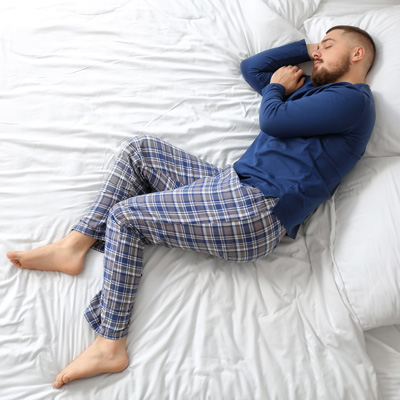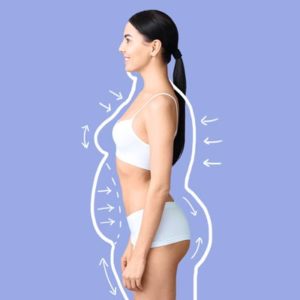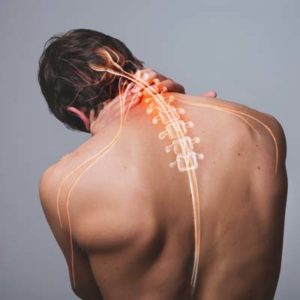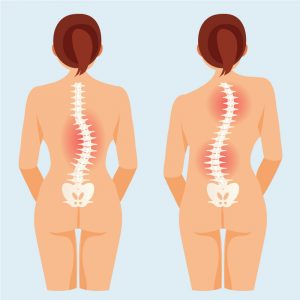Last Modified on July 29, 2025 by Dr. Tyler Meier
Best Sleeping Position for Sacroiliac Joint Pain Relief: A Chiropractic BioPhysics® Guide

If you’re tossing and turning at night because of sacroiliac joint pain, you’re not alone. The good news? The right sleeping position can make a world of difference for your SI joint pain relief.
In this guide, we’ll explore the best sleeping positions for sacroiliac joint pain and how Chiropractic BioPhysics® can help you find lasting relief.
What Is Sacroiliac Joint Pain and Why Does It Get Worse at Night?
Your sacroiliac joints are located where your sacrum (the triangular bone at the base of your spine) meets your pelvis. These joints play a crucial role in supporting your body weight and transferring forces between your spine and legs.
The SI joints are designed for stability, not mobility. When they become misaligned or inflamed, even small movements can cause significant pain.
Why SI Joint Pain Flares Up During Sleep
We often hear patients ask, “Why does my SI joint hurt more at night?” There are several reasons:
- Inflammation builds up throughout the day. When you lie down, reduced blood flow can make stiffness and pain more noticeable.
- Joint loading changes when you sleep. Poor positioning can put extra pressure on already irritated joints.
- Immobility during sleep allows muscles to tighten and joints to stiffen. This is why you might feel worse when you first wake up.
Your daytime habits directly impact your nighttime comfort. Poor posture while sitting at work or driving can create muscle imbalances that worsen SI joint dysfunction.
Signs Your Sleeping Position Might Be Worsening SI Joint Misalignment
Watch for these warning signs:
- Morning stiffness that lasts more than 30 minutes
- Pain that shoots into your hip or leg when getting out of bed
- Difficulty finding any comfortable position
- Waking up multiple times due to pain
Best Sleeping Positions to Relieve Sacroiliac Joint Pain
Finding the right sleeping position is key to managing SI joint pain. Let’s break down the best options for different sleep preferences.
For Back Sleepers: Pillow Under Knees to Reduce Pelvic Tilt
Back sleeping can be excellent for SI joint pain when done correctly. Place a pillow under your knees to maintain your spine’s natural curve. This position reduces pressure on your lower back and keeps your pelvis in a neutral position.
Pros:
- Even weight distribution
- Reduced pressure on joints
- Good spinal alignment
Cons:
- May worsen sleep apnea
- Not comfortable for everyone
Ideal mattress type: Medium-firm support that contours to your body without sinking too much.
For Side Sleepers: Fetal Position with Pillow Between Knees
Side sleeping is often the most comfortable position for SI joint pain sufferers. The key is proper alignment. Draw your knees slightly toward your chest and place a firm pillow between your knees.
Benefits for pelvic alignment: This position keeps your spine neutral and prevents your top leg from pulling your pelvis out of alignment.
Left vs. right side differences: Some patients find one side more comfortable than the other. Listen to your body and choose the side that feels better.
For Stomach Sleepers: Why It Aggravates SI Joint Strain
We strongly discourage stomach sleeping for SI joint pain. This position forces your neck into an uncomfortable twist and flattens your spine’s natural curve. The result? Increased strain on your SI joints and surrounding muscles.
Better alternatives:
- Modified ¾ side position: Lie mostly on your stomach but angle slightly to one side
- Wedge support: Use a small pillow under your pelvis to reduce back extension
Bonus: Sleeping in a Reclined Position – Who Should Consider It?
Some patients find relief sleeping in a reclined chair or adjustable bed. This position can reduce pressure on the SI joints by keeping your hips slightly flexed.
Consider this option if:
- Traditional positions cause severe pain
- You have concurrent hip problems
- Getting in and out of bed is difficult
How Chiropractic BioPhysics® (CBP) Targets the Root Cause of SI Joint Pain
What Makes CBP Different from Traditional Chiropractic for Joint Alignment
At CorePosture Chiropractic, we use Chiropractic BioPhysics® to address the underlying postural problems causing your SI joint pain. Unlike traditional chiropractic that focuses mainly on adjustments, CBP combines precise spinal corrections with postural rehabilitation.
Research by Harrison et al. in the Journal of Manipulative and Physiological Therapeutics demonstrates that CBP techniques produce measurable improvements in spinal alignment.
CBP works by:
- Analyzing your posture with precise measurements
- Creating a custom treatment plan based on your specific misalignments
- Using targeted exercises to retrain your postural muscles
- Providing ongoing support to maintain improvements
Real Patient Story: Hana, a 42-year-old teacher, came to us after months of SI joint pain that kept her awake at night. Through CBP treatment, we corrected her forward head posture and pelvic tilt. Within 12 weeks, she was sleeping through the night and pain-free during the day.
Supportive Tools: Kinesiology Taping and Custom Bracing for Nighttime Comfort
We often recommend supportive tools to complement your treatment:
- Kinesiology taping provides gentle support while you sleep
- Custom bracing can help maintain proper alignment
- Postural aids like cervical pillows support your treatment progress
Lifestyle & Sleep Habits That Support Long-Term SI Joint Relief
The Ideal Evening Routine: Mobility Work + Relaxation
Create a consistent bedtime routine that includes:
- 10-15 minutes of gentle stretching
- Heat therapy (warm bath or heating pad)
- Relaxation techniques like deep breathing
- Avoiding screens 1 hour before bed
Best Types of Pillows and Mattresses for SI Joint Sufferers
Pillows:
- Memory foam or latex for consistent support
- Contour pillows for side sleepers
- Wedge pillows for back sleepers
Mattresses:
- Medium-firm support (6-7 on a 10-point scale)
- Memory foam or latex for pressure relief
- Avoid mattresses that are too soft or too firm
Pre-Bedtime Stretches
Try these gentle stretches before bed:
- Child’s Pose: Kneel and sit back on your heels, then reach your arms forward and lower your head to the floor. Hold for 30 seconds.
- Piriformis Stretch: Lie on your back, cross one ankle over the opposite knee, and gently pull the uncrossed leg toward your chest. Hold for 30 seconds each side.
- Knee-to-Chest: Lie on your back and gently pull one knee toward your chest. Hold for 30 seconds each side.
How to Track Your Pain & Posture: Journaling or Using an App
Keep track of your progress with:
- Daily pain ratings (1-10 scale)
- Sleep quality notes
- Activities that worsen or improve symptoms
- Photos to track postural changes
Take the Next Step Toward Better Sleep and Lasting Relief
If you’re ready to break the cycle of sleepless nights and SI joint pain, we’re here to help. At CorePosture Chiropractic in Newport Beach, we specialize in Chiropractic BioPhysics® – a proven approach that addresses the root cause of your pain, not just the symptoms.
Don’t let another night of pain prevent you from getting the rest you deserve. Your journey to pain-free sleep starts with one phone call.
Ready to sleep better tonight? Contact CorePosture Chiropractic today to schedule your Chiropractic BioPhysics® consultation and take the first step toward lasting SI joint pain relief.

Dr. Tyler Meier is a board-certified, licensed chiropractor and founder of CorePosture Chiropractic in Newport Beach, CA







